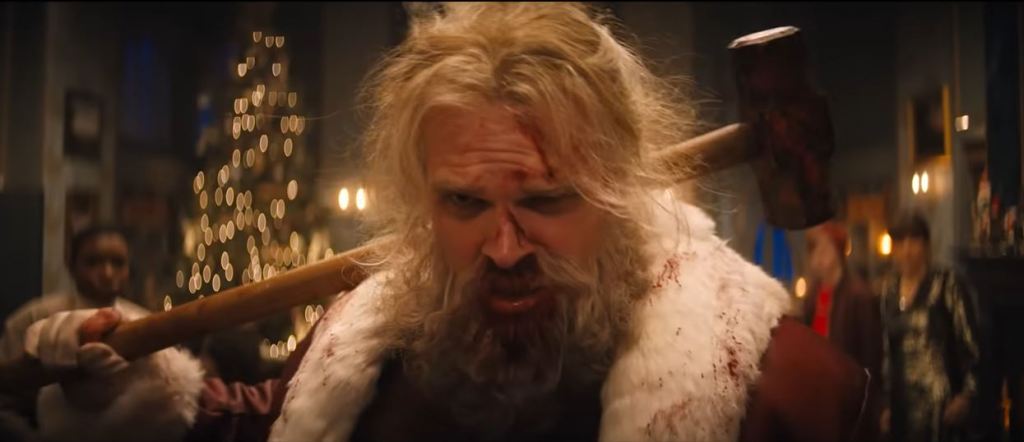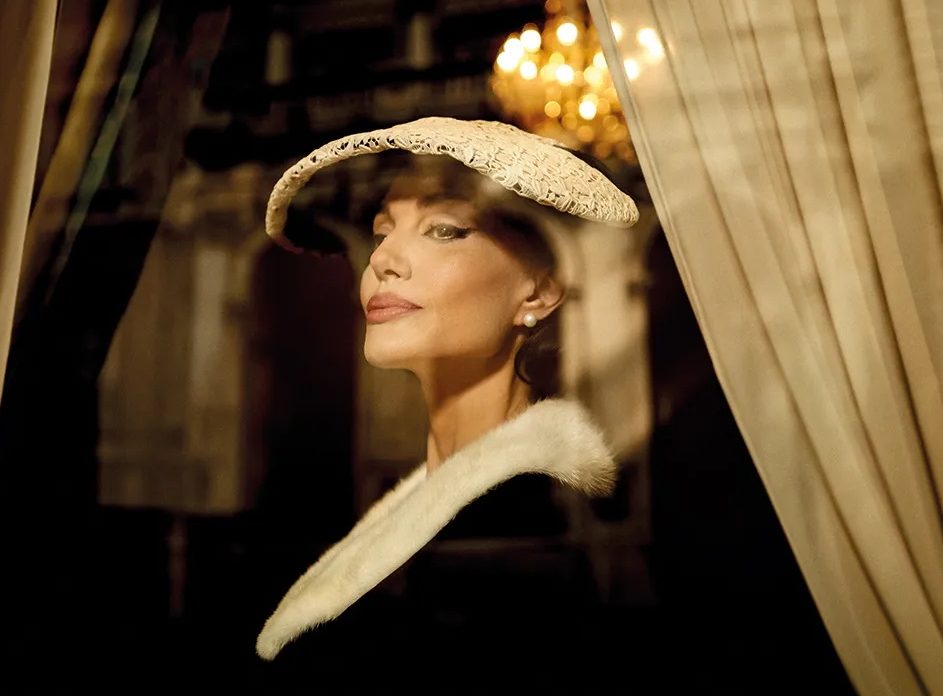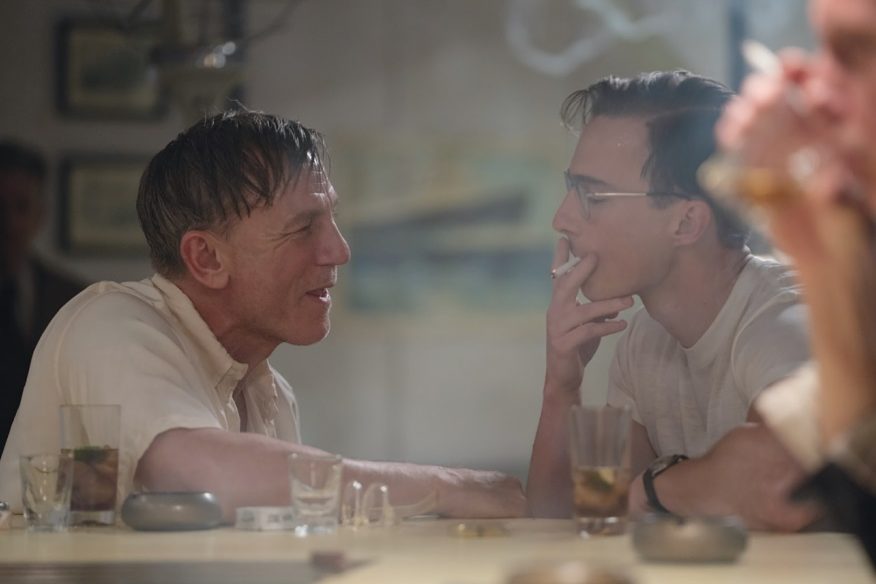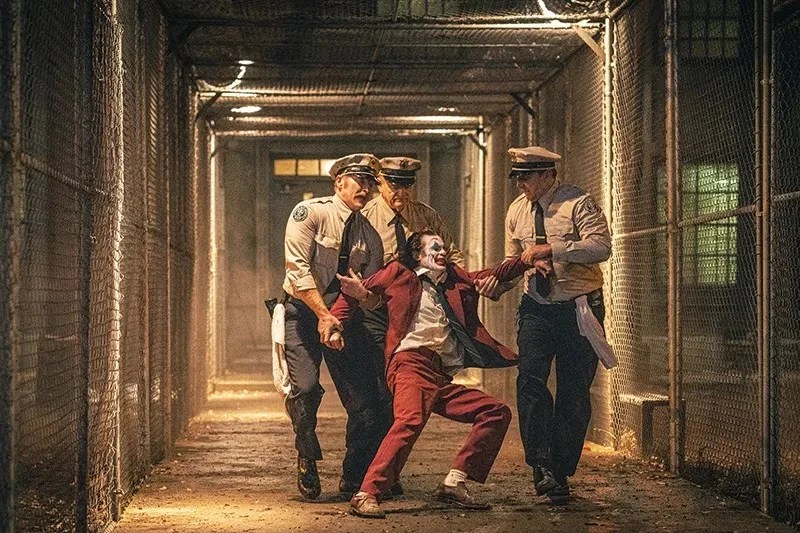The pitch meeting for Violent Night must have been fun: why not make a big-budget film where Santa Claus himself (David Harbour) must protect a spoiled rich family from a home invasion? It might even settle the age-old debate about whether Die Hard is a Christmas movie: this is what a Die Hard-style Christmas really looks like!
Violent Night largely delivers on that premise, serving up high-octane holiday mayhem for the grownup set. Here, we get a disenchanted (and borderline alcoholic) Kris Kringle, who’s grown tired of modern kids requesting only cash and video games and is contemplating hanging up his hat. We’re a long way from the jovial protagonist of The Santa Clause or even the crankier iteration of Elf. Years of munching Christmas cookies haven’t made this Santa soft.
Enter the wealthy and corrupt Lightstone family, whose dysfunctional Christmas festivities are interrupted by the appearance of a gang of home invaders with holiday-inspired callsigns. Led by the sinister “Mr. Scrooge” (John Leguizamo), the gun-toting gang is after a $300 million cash stash supposedly hidden somewhere on the premises. To be sure, the Lightstones aren’t all bad. For one thing, there’s little Trudy Lightstone, who still believes in Santa and hopes he can make her separated parents reconcile. It’s Trudy who ends up joining forces with Santa as he goes all John McClane on the attackers.
When Santa’s reindeer accidentally leave him behind at the Lightstone compound, Jolly Old Saint Nick has no choice but to take up arms. But thanks to a backstory rewrite, this isn’t your grandfather’s Santa Claus. Here he’s no longer a Turkish bishop with a penchant for punching Arian heretics, but an ex-Viking warrior with a bloody past. And bloody is the name of the game. In a lengthy Kill Bill-style sequence, Santa uses every imaginable piece of Christmas décor to annihilate a squad of mercenary assassins, taking down at least four with a sharpened candy cane to the throat. Ho ho ho.
Nobody enters a movie like this expecting high art, and at one level, all of this is pure schlock (though to its credit, it never looks cheap). It’s competently assembled and visually inventive, but the payoff was always destined to be the brutality of the kills on offer. Someone goes through a wood chipper to predictable results, etc. But unexpectedly, Violent Night turns out to be a movie with somewhat more on its mind than gunfire and gore.
The best and truest stories about Santa Claus are those about faith in the midst of doubt. Miracle on 34th Street is so powerful because, beneath the surface, it tracks the structure of the Passion narrative: a mysterious wonder-working figure enters a city that simultaneously fears and reveres him, transforms the existing social order, comes into conflict with authorities who try to stop him, and finally departs once his work is finished.
Strangely enough, Violent Night eventually reveals that it’s cut from that same thematic cloth. Between all the bloody deaths, and beneath the farcical exterior, are some surprisingly pointed reflections on belief and the human condition.
First, there’s the film’s ongoing meditation on the nature of gifts. While parents and other caretakers may mark their children’s presents with Santa’s name, that doesn’t mean Santa himself isn’t real: “I bring gifts anyway,” he explains. Denial of Santa’s existence, in other words, does not mean that he is not present and working. For Trudy, though, those gifts aren’t the most important part. “You are more than just the gifts you bring,” she tells him at a crucial moment. For her, gifts unavoidably testify to a giver, rather than existing only for themselves.
And then there’s the specter of theodicy. In a heated confrontation with Mr. Scrooge, it becomes clear that the criminal leader — in true Grinchy fashion — is driven primarily by rage against Christmas as such, a holiday which for him is permanently stained by past tragedy. In response, Santa tries to explain that, as far as Christmas goes, he doesn’t really get much involved beyond gift-giving. “Maybe you should!” Mr. Scrooge roars — and there we have the age-old Problem of Evil presented in all its starkness.
Finally, without giving too much away, it’s worth noting that the film’s conclusion culminates with some of the most explicitly Christian-inspired imagery I’ve seen in years. It presses Miracle on 34th Street’s narrative logic to its proper conclusions, with unexpectedly rewarding results.
These are not at all observations I expected to make about Violent Night. And they shouldn’t be taken to mean that the movie is wholesome fun for the whole family. After all, this is still a messy, bloody, and sometimes boorish action comedy that’s at least half an hour too long.
But in a strange Christmas surprise, it turns out there’s some unexpected storytelling magic here too.





















